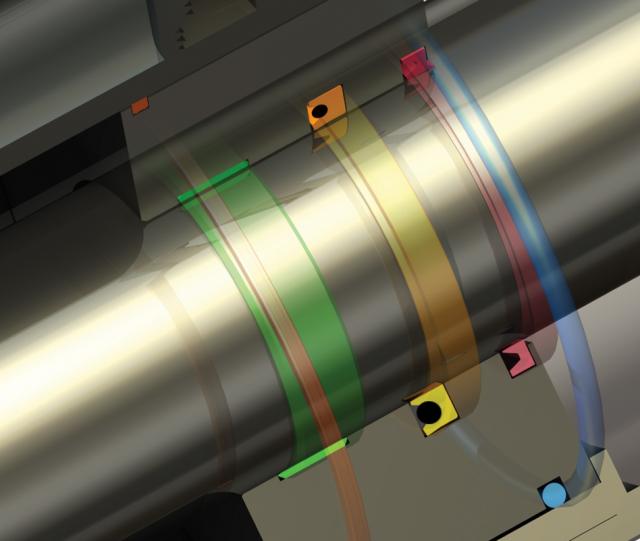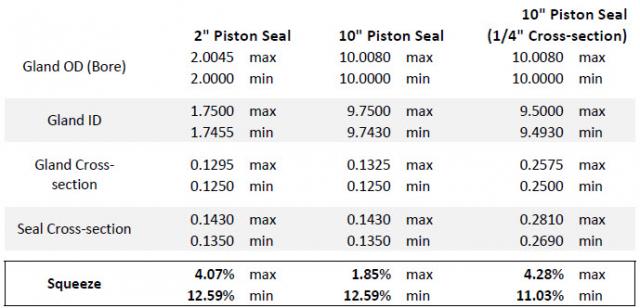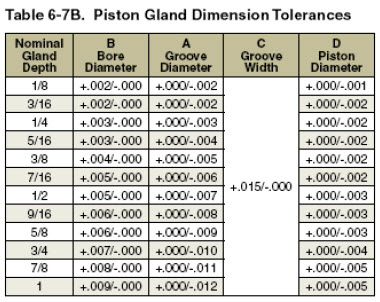Article re-posted with permission from Parker Hannifin Sealing & Shielding Team.
Original content can be found on Parker’s Blog.
Sealing decisions are often left until the end of product development. By the time a call or email is sent to Gallagher Fluid Seals, the gland m. This may not pose a problem in many applications, but it can often leave the seal engineer with few options. Having input from the seal expert in the early stages will allow for greater flexibility in choosing a seal and better chances at optimal sealing.
There are many factors to consider when choosing a seal, but this blog will focus on why seal cross‐section is so important. Sealing interfaces are an assembly of tolerances. Each mating piece has its own tolerance and there is a probability that everything could assemble in the worst‐case scenario. The American National Standards Institute (ANSI) has a series of standard tolerance grades (reference ANSI B4.1).
These grades show that as the diameter of a part increases, the amount of total tolerance required to consistently make that part also increases. This increase in tolerance means that the seal gland will have a greater amount of variance as the diameter increases. In order to have a consistent seal, Parker wants to minimize this variance.
Here’s a comparison between a two inch diameter piston seal and a ten inch seal. Both glands have a 1/8” cross‐section and have grade 10 tolerance. A ¼” cross‐section design is also shown to illustrate why a greater cross‐section is desirable. These numbers are meant for demonstration only and assume that the machine shop making the metal parts cannot hold better than grade 10 tolerances.
The seal cross‐sectional tolerance was taken from standard O‐ring designs. The important thing to note is the variance created by the tolerance. The 2” design will end up with about 8.5 percent variance in the squeeze (12.59 – 4.07 = 8.52), while the 10” design has 10.7 percent variance. This is definitely going in the wrong direction with a 26 percent increase in variance.
Taking a look at the ¼” cross‐section but keeping the same grade 10 tolerances on the gland, the squeeze variance drops down to only 6.75 percent. This is a reduction in variance (improvement) by over 37 percent on this 10” application. Less variance means greater sealing consistency.
One place to see how this works for Parker’s sealing recommendations is to look at the charts for gland dimension tolerances, such as the chart to the right. Check out Gallagher Fluid Seals' Fluid Power Seal Guides.
The recommended tolerance goes up as the seal cross‐section gets larger, because the larger seal can cope with a greater amount of gland tolerance.
The variance can be attacked from a different direction. If the gland dimensions can be held to tighter tolerances, the variance can also be reduced. Likewise, if the seal’s cross‐section is held or inspected to tighter tolerances, the variance will diminish. These solutions are typically more expensive options than using an off‐the‐shelf seal design and tolerances that are reasonable for the average machine shop.
Getting the seal designer on board early will help ensure that an appropriate seal cross‐section can be chosen. Early in the process, the actual squeeze can be tailored to the application’s size and intended use. There is usually a need to compromise on available sealing space, but keeping the variance in check is a great way to make sure the application seals when you want it to.
For more information about measuring cross section, or to enlist the help of a Gallagher Fluid Seals engineer, contact us today.



